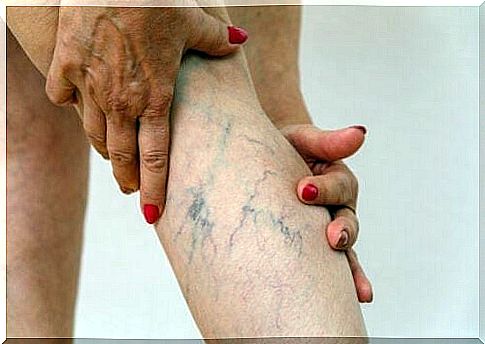Thrombophlebitis: Causes, Symptoms And Treatment

Phlebitis, also called thrombophlebitis, is an inflammatory process caused by the formation of a blood clot that obstructs one or more veins, usually in the leg. There are two main types of phlebitis: superficial (near the outermost areas of the skin) and deep (inside the muscle).
It is a rather common pathology: it is estimated that it affects 3 to 11% of the population over the course of life, but it is more frequent in women after 60 years of age.
Main symptoms of thrombophlebitis
Phlebitis falls into two categories: superficial and deep (also known as deep vein thrombosis or DVT). The clinical signs therefore depend on the type of phlebitis. According to the National Library of Medicine portal, the general symptoms are:
- Swelling of the part involved, usually the leg.
- Ache.
- Skin redness : not always present.
- Heat with increased sensitivity of the blocked vein.
Superficial thrombophlebitis is accompanied by skin redness and the veins take on the appearance of a hard, swollen cord. DVT is less evident and is characterized by generalized pain and swelling.

Causes of thrombophlebitis
Thrombophlebitis occurs when a blood clot lodges in one or more veins, causing them to swell. Among the most common causes we find:
- Vein injury.
- Hereditary bleeding disorder.
- Remain immobile for a long time, as in the case of a hospital stay.
- Application of a pacemaker through a vein at the level of the groin.
- Pregnancy and childbirth within the previous six months.
- Obesity and overweight.
Venous clots typically form when blood flow is slowed or impaired. Any disease that has this side effect (from obesity to some surgical procedures) can cause superficial or deep phlebitis.
Diagnosis
A diagnosis can be made through a direct assessment of the affected party. However, venography, a technique that uses x-rays, or an ultrasound can be done to accurately identify the cause. Blood clotting and genetic tests complete the diagnosis.
Risk categories and complications of thrombophlebitis
The typical age of patients with phlebitis is over 60, especially in women. 90% of superficial phlebitis affects those who already suffer from varicose veins, while in 10% of cases the veins are healthy. The major risk factors are:
- Obesity : is a major risk factor for numerous heart diseases. Excess body mass is associated with cardiovascular disease, heart failure and sudden death.
- Smoking : predisposes to the formation of blood clots in the arteries and veins.
- Hormone therapy : Birth control pills and hormone replacement therapy can increase the tendency for blood clots to form in some patients.
- Prolonged immobility due to hospitalization or an excessively sedentary lifestyle.
In addition to these common factors, thrombophlebitis may be favored by the presence of a pacemaker in the central veins, a family history of blood clotting disorders or cerebrovascular accidents, and numerous other clinical pictures. Ultimately, any pathology that alters venous flow can result in phlebitis.
As for complications, if identified in a timely manner, thrombophlebitis can be easily treated. On the contrary, if not dealt with correctly, it can lead to the formation of a blood clot in the lungs, an event called pulmonary embolism.

Therapy
The angiologist and the vascular surgeon are the professionals to turn to in case of phlebitis. Less severe cases usually resolve with pain relievers, blood thinners, and antithrombotics to dissolve the clot.
In patients with a more complicated clinical picture, removal of the obstructed vein, if superficial, or a venous bypass may be considered, but these are much less common procedures.
To prevent phlebitis: movement
Thrombophlebitis is a fairly common condition, especially in older people with varicose veins. This is usually a clinical picture with a good prognosis, but if not addressed in time it can worsen.
To prevent phlebitis, the ideal is to lead a healthy lifestyle: move, exercise, do not smoke and avoid high-calorie foods. Obesity is the source of several complications, including the formation of blood clots.









